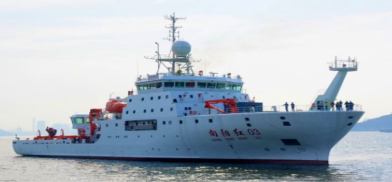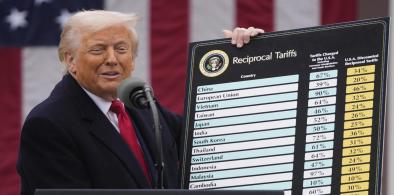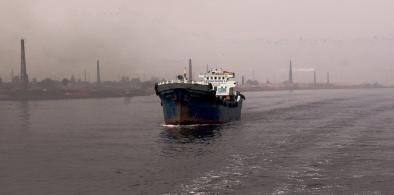Chinese 'research vessels' in Indian Ocean raises red flags in Indian maritime circles
Over half of these 'research vessels' operated in the South China Sea, but their growing presence in the Indian Ocean has stirred regional tensions and is a matter of growing concern to India.

On March 7, 2024, India reportedly issued a NOTAM (notice to airmen) over the Bay of Bengal and the Indian Ocean Region (IOR) - spanning a length of nearly 3,550 km beginning from the coast of Odisha - as an alert before carrying out tests of two nuclear-capable ballistic missiles —the K4 submarine-launched and the Agni-V surface-to-surface versions— between 11 and 16 March 2024.
A few days prior to these tests, a Chinese research vessel, Xiang Yang Hong 01, entered the Bay of Bengal region. This was the second Chinese research vessel to enter the oceans around India in the past few weeks of February-March. According to maritime analytics provider Marine Traffic, the Xiang Yang Hong 01 departed from the Chinese port of Qingdao on 23 February 2024 and entered the Bay of Bengal two days later.
This is not the first time that a Chinese vessel entered the IOR just before a planned missile test by India. In November 2022, a Chinese research vessel Yuan Wang 06, capable of tracking missile tests, entered the IOR days before the test was scheduled. The information gathered by these Chinese research vessels can be used for both civilian and military purposes.
According to a 10 January 2024 report in The Washington Post, Chinese research vessels connected with/deployed by to the People’s Liberation Army (PLA) are conducting sweeping surveys of the undersea floor in the Indian Ocean, collecting data that could be crucial in deploying submarines in a region that is a critical energy supply line for Beijing in the event of a war with Taiwan.
A report by the Washington-based Centre for Strategic and International Studies (CSIS) states that China maintains the world’s largest fleet of civilian research vessels, and that at least 80 per cent of 64 such vessels operating globally since 2020 have displayed “warning indicators” that their work is tied to military objectives. Over half of these 'research vessels' operated in the South China Sea, but their growing presence in the Indian Ocean has stirred regional tensions and is a matter of growing concern to India.
Beijing's 'suspicious' oceanic surveys
A new analysis by the CSIS of hundreds of thousands of hours of shipping data since 2020, shows that the Indian Ocean is fast becoming one of the biggest domains for Chinese oceanic surveys, which are ostensibly civilian in nature but tied to the PLA and Beijing’s military-civil fusion program — a national strategic plan to advance China’s military by acquiring technology and research from civilian groups.
The types of ocean surveys carried out by the vessels have research applications for energy resources and marine environments, but the data collected can also be used for military purposes, analysts say, including how to manoeuvre and obscure submarines during conflict.
The CSIS report revealed that of the 13 vessels undertaking survey and research activity in the Indian Ocean since 2020, all have links to China’s military/PLA and have displayed suspicious behaviour including docking at Chinese military ports or temporarily turning off tracking devices.
Matthew Funaiole, a senior fellow at CSIS who worked on the report reportedly stated, “The Indian Ocean is critical to China’s strategic and economic interests, as well as its geopolitical rivalry with India…….Beijing is serious about fielding a blue-water navy, one that will be active in the Indian Ocean, and blurring the lines between its research ecosystem and its national security apparatus will help it get there.”
According to Maritime Executive, dated 14 January 2024, CSIS was able to validate its assertions that China is using research vessels to advance military strategies through the activities of three vessels. One of them is the Xiang Yang Hong 06, which travelled more than 10,000 km over 110 days to survey vast stretches of the Indian Ocean in 2019 and 2020. The underwater gliders and floats deployed during the mission are believed to covertly enhance security and military activities.
A four-month ocean bed mapping mission in early 2023 by the Chinese seismic survey ship Hai Yang Shi You 760 is another instance, as the seismic and bathymetric data collected could be of significant value to the PLA. A research mission by Shiyan 06 in the eastern Indian Ocean in October 2023 is another case. The vessel is operated by the South China Sea Institute of Oceanology, which has provided technical and logistical support for China’s militarization of the South China Sea.
CSIS contends that the PLA is able to leverage the insights gained from these missions to enhance its knowledge of the dynamic undersea environment, a crucial precursor to confidently deploying naval forces abroad.
“China is not alone in applying oceanographic research to support military needs. Yet the scale of China’s activities is immense, and the line between its civilian and military research is heavily blurred,” states the report.
The report adds that while China’s surveying operations have been heavily concentrated along its maritime periphery in the South China Sea and western Pacific Ocean, Beijing has also set its sights on the Indian Ocean, an emerging arena of competition with India. Over the past four years, 13 Chinese research vessels have been active in the Indian Ocean region. All have links to China’s military, including organizational ties to the PLA, and demonstrate questionable activities at sea and in port.
Colombo caught in competing interests
New Delhi was instrumental in pushing Sri Lanka to impose a one-year moratorium on Chinese research vessels from docking in its ports, warning of their potential impact on security and strategic concerns for the countries. New Delhi has aired concerns that the research vessels — some of which have previously docked in Sri Lanka — are being used to monitor waters in India’s strategic sphere of influence. Sri Lanka, which took on nearly $12 billion in Chinese loans between 2000 and 2020, has struggled to balance the competing demands of Beijing and New Delhi, analysts say.
“India has made its displeasure known to Sri Lanka; some of these vessels are too close to Indian territory and Indian interests for comfort,” said Abhijit Singh, a former Indian naval officer and senior fellow at the New Delhi-based think tank Observer Research Foundation. “Crudely put, this is the real fear, that China is going to work on its combat capability by studying the environment in these waters.”
The Chinese Embassy in India did not respond to a request for comment.
Former Indian Navy Chief Admiral R Hari Kumar reportedly stated that the navy is closely monitoring China’s sustained presence in the Indian Ocean Region as part of its efforts to keep under surveillance extra-regional forces operating in the vast stretch to assess the activities they are engaged in and their intentions. “China may have a legitimate reason to be present in the Indian Ocean Region for economic activity. But we, as the resident naval power of the Indian Ocean, keep an eye on what is happening there,” the navy chief said at a media briefing prior to Navy Day in December 2023.
Speaking at a seminar organised by The Chanakya Dialogues and the PHD Chamber of Commerce and Industry on 29 April 2023, Admiral Hari Kumar admitted that Chinese research vessels, which are free to operate in international waters, have the ability to track and collect electronic signals, it becomes a challenge when such vessels in the region operate too close to areas of Indian national interest. He said India has to caution its neighbours and friendly nations on these challenges and keep a close watch on the activities of such vessels. “We are keeping a very close watch in the Indian Ocean Region. We put a lot of effort on surveillance, on maritime domain awareness... Our effort is to know who is present and what they are up to on a 24x7 basis. That is our job and we deploy aircraft, UAVs, ships, submarines, etc.,” he said.
The firefight-fearing Chinese are at their devious best when it comes to dealing with the Indian Army on land and Indian Navy on the seas. On the disputed land border, the Line of Actual Control, they have taken great advantage of an agreement which they pressed India very hard for after the 1967 Nathu La and Cho La skirmishes in Sikkim-that the two armies/border troops do not fire at each other. And since then, they have been doing ‘salami-slicing’ and border management very often by pulling/pushing/grappling/fisticuffs/iron rods with nails and endless rounds of talks.
On the seas, the PLA Navy has been making use of these 'research vessels' which do not come in the category of warships and are not fired at. At best, the Indian Navy counters the PLA Navy by posturing and making some maritime moves which often rile the Chinese.
That is the way Indian Army and Navy are fated to function till some day New Delhi decides to ‘bite the bullet’.
(The author is a military affairs specialist and former Defence Ministry and Indian Army spokesperson. Views are personal. He can be contacted at wordsword02@gmail.com)
P.S Live ID: K89Io9blWX1UfZWv3ajv
P.S.S <a href=https://kiberis.ru/x-default>Программы и игры для Андроид телефона</a> <a href=https://krasota.ru/comments/posted/?c=56531>Программы и игры для Андроид телефона</a> <a href=https://www.team-tt.de/index.php?site=profile&id=88&action=guestbook>Программы и игры для Андроид телефона</a> 470_321




















Post a Comment